Ready to jump on the WebRTC bandwagon?
WebRTC is a powerful communications tool that enables real-time communication over the internet. It is an open standard supported by major browsers, including Google Chrome, Mozilla Firefox, Opera, and Microsoft Edge. This cutting-edge technology is shaping the future of communication.
The technology is still under development, but it's already being used by some of the biggest names in the tech industry, including Google, Facebook, and Microsoft. It is also used by many applications, such as Skype, WhatsApp, and Messenger. WebRTC is changing how we communicate online, and it will only become more popular in the years to come, but what does it mean? And most importantly, should you be using it?
In this blog post, we'll answer all of those questions and more. From its origins in open-source projects to its use in building next-generation applications, we'll cover all the basics. And since no discussion of WebRTC would be complete without mentioning security, we'll also touch on some of the most important considerations for keeping your data safe. So buckle up and get ready to learn everything you need to know about WebRTC!
What is WebRTC?
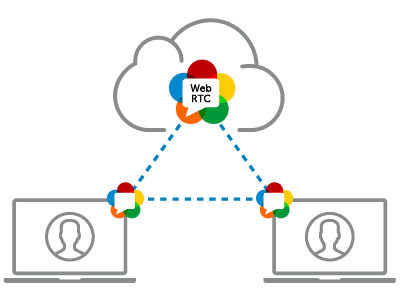
WebRTC is a free, open-source project that enables real-time audio, video, and data communication in web browsers and mobile applications. It uses the MediaStream API to access the user's microphone and webcam. The MediaStream API is an extension of the HTML5 <video> and <audio> elements.
With WebRTC, you can build applications such as video chat, file sharing, and screen sharing without installing plugins or third-party software. WebRTC is available on all major browsers, including Chrome, Firefox, Opera, and Safari. You can also find WebRTC-enabled email clients, messaging apps, and VoIP services.
What is the Need for WebRTC?
As a real-time communication technology, WebRTC allows you to voice and video chat directly from your web browser without requiring any plugins. There are a lot of potential uses for WebRTC that are still being discovered despite its development since 2011.
For instance, you can use WebRTC to create a video call center in your web browser or build a live streaming app that lets users watch a video feed and chat in real time. The possibilities are endless! And since WebRTC is open source, anyone can contribute to its development and improve it.
Various WebRTC Architecture
WebRTC topologies can be classified into three different types depending on the components used in the system and the way they interact. These topologies are Peer-To-Peer (P2P), Selective Forwarding (SFU), and Multi-Point Control (MCU). Let's examine each of them in more detail.
1. Peer-To-Peer (P2P) Architecture
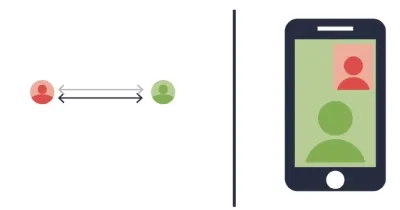
P2P is the most basic form of WebRTC architecture where each client interacts directly with all the other clients in the group. No central server manages the media streams, so all the traffic goes through the clients.
This architecture is simple and efficient, but it has its limitations. P2P does not scale well to large numbers of clients. As the number of clients grows, it becomes unmanageable and results in poor performance.
2. Selective Forwarding (SFU) Architecture
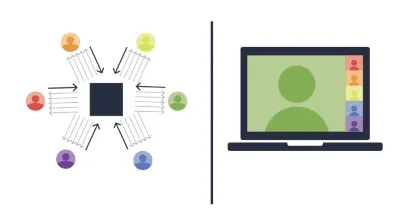
SFU is a more complex WebRTC architecture that uses a central server to manage media streams. Clients send their media streams to the server, which then forwards them to the other clients in the group. This selective forwarding allows the server to control which streams are sent to which clients.
It reduces the overall traffic and makes it possible to support a larger number of clients. However, SFU introduces additional latency into the system since media streams have to travel through the server before reaching their destination.
3. Multi-Point Control (MCU) Architecture
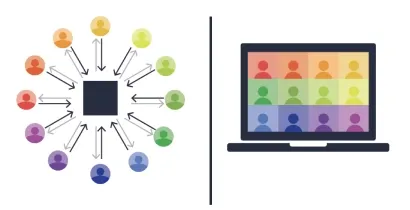
MCU is the most complex form of WebRTC architecture and uses multiple servers to manage media streams. After the clients send media streams to a central server, it is forwarded to other servers in the system.
These servers then relay the streams to the clients in their respective groups. This approach reduces latency by distributing traffic across multiple servers, but it also adds complexity and cost since more servers are required. Therefore, MCU is typically only used in large-scale systems where low latency is essential.
How Does WebRTC Work?
Now that we understand the topologies of WebRTC let’s understand how it works.
1. Code and API
WebRTC uses code and APIs to provide real-time communications capabilities directly in the browser. This includes features like mediastream (getusermedia), RTCPeerConnection, and RTCDataChannel.
Mediastream (Getusermedia)
Mediastream (getusermedia) allows users to access their camera and microphone directly from the browser. As a result, users can share audio and video content in real-time without needing plugins or third-party software.
RTCPeerConnection
RTCPeerConnection is used to establish a direct connection between two browsers. This allows for low-latency communication, as there is no need for data to be routed through a server.
RTCDataChannel
RTCDataChannel enables browsers to exchange data directly with each other. This can be used for things like file sharing or text chat.
All these features come together to provide a powerful communication platform that you can use without additional software.
2. Establishing Connections
WebRTC works by establishing peer-to-peer connections between browsers or devices. This means that audio and video signals are sent directly between two devices without going through a server. WebRTC uses a set of protocols to establish these connections, including signaling, NAT traversal, and codecs.
1. Signaling
Signaling is the process of setting up and tearing down connections between devices. It involves exchanging information, such as IP addresses and media codecs. Signaling can be done in many ways, but the most common method is using a server as a signaling gateway.
2. NAT Traversal – ICE, TURN, and STUN
Once the signaling process is complete, the next step is establishing the connection between the two devices. This is where NAT traversal comes in. NAT traversal is a technique for connecting devices behind a NAT router. NAT routers are commonly used in home and office networks to improve security and conserve IP addresses.
To connect two devices behind NAT routers, WebRTC uses a set of protocols known as ICE, TURN, and STUN.
- ICE stands for Interactive Connectivity Establishment. It is a protocol for finding the best path for sending data between two devices.
- TURN stands for Traversal Using Relays around NAT. It allows data to be sent via an intermediate server if a direct connection cannot be established.
- STUN stands for Session Traversal Utilities for NAT. It is used to find the public IP address of a device behind a NAT router.
3. Codecs
Finally, once the connection is established, audio and video signals can be sent between the two devices using codecs. Codecs are algorithms that compress audio and video signals so they can be transmitted more efficiently over the network. WebRTC supports several codecs, including VP8, VP9, H264, and Opus.
3. Availability in Different Web Browsers

WebRTC uses the Peer-to-Peer Connection (P2P) protocol to communicate securely between two devices. P2P is a decentralized network protocol that doesn't rely on a central server. This makes it ideal for use in web applications where data needs to be exchanged between two or more devices in real time.
WebRTC provides real-time communication between browsers and devices. It's available in all major browsers, including Chrome, Firefox, Opera, and Safari. It works without plugins or downloads, making it easy to use and accessible.
4. Media And Access in Devices
WebRTC uses the media and access controls in devices to allow two-way communication between devices so that users can share audio and video content in real-time without lag or latency.
WebRTC Encryption And Security
WebRTC is also encrypted, which means your communications are secure from eavesdropping. The encryption used by WebRTC is based on the Secure Real-Time Transport Protocol (SRTP), a standard for encrypting media traffic.
1. Browser Protection
WebRTC uses several security mechanisms to protect your communications from being eavesdropped on or hijacked. One of these mechanisms is the browser's built-in security features, which prevent malicious code from running on the web page and accessing the webcam or microphone.
2. Media Access
Another security mechanism used by WebRTC is media access control (MAC). MAC prevents unauthorized devices from accessing the media stream. This is important because an attacker cannot simply intercept the media stream and listen in on the conversation.
3. Encryption
As mentioned earlier, WebRTC uses encryption to protect your communications from being eavesdropped on. The encryption used by WebRTC is based on the Secure Real-Time Transport Protocol (SRTP), a standard for encrypting media traffic. SRTP uses many cryptographic algorithms to encrypt the data, making it very difficult for an attacker to eavesdrop on the conversation.
WebRTC Servers
WebRTC Servers act as a gateway between two communication devices. They provide NAT/firewall traversal, media relay, and bandwidth management for VoIP and video streaming applications. WebRTC servers use a variety of protocols, including the Session Initiation Protocol (SIP), the Media Gateway Control Protocol (MGCP), and the Real-time Transport Protocol (RTP).
Furthermore, WebRTC servers can provide various value-added services, such as voice mail, call waiting, and caller ID. By using WebRTC servers, organizations can extend the reach of their communications infrastructure and provide a more effective and efficient way for employees to collaborate.
WebRTC Add-Ons
WebRTC enables real-time communications directly in the browser without requiring additional plugins or software. It is, therefore, ideal for several different applications, including broadcasting and telephony.
WebRTC And Broadcasting
While enterprises and developers have widely adopted WebRTC for building communication applications, it also has great potential for broadcasting. For example, broadcasting with WebRTC can be used to live stream events, create webinars, or build interactive video applications.
The benefits of using WebRTC for broadcasting include the ability to reach a global audience with low latency and no plugins required. In addition, WebRTC broadcasting can be easily integrated into existing applications and websites.
WebRTC And Telephony - SIP And PSTN
SIP (Session Initiation Protocol) and PSTN (Public Switched Telephone Network) are two popular telephony technologies. SIP is commonly used for VoIP (Voice over IP) calls, while PSTN is used for traditional phone calls. However, both technologies can be used for web-based communication.
WebRTC uses SIP for signaling, which means it can be used to make VoIP calls in the browser without needing a plugin. In addition, WebRTC can also be used to make PSTN calls using an add-on such as Google Voice or Skype.
We all know that Skype used to have its charm, but now it’s facing tough competition from other platforms. Here's a list of great Skype alternatives, you can check for video conferencing platforms.
Different Use-Cases of WebRTC
The advent of WebRTC has been a game-changer for the online communication industry. This powerful technology has made it possible for developers to create rich, interactive applications that can be used in various ways.
1. E-Commerce
The e-commerce sector has been one of the biggest beneficiaries of WebRTC technology. The use of real-time voice and video communication features on e-commerce websites has enhanced the online shopping experience for customers.
With WebRTC, customers can now consult with customer service representatives in real time, without waiting for email responses or relying on chatbots. In addition, it allows customers to view products in greater detail, giving them a better idea of what they're buying before they commit to a purchase.
2. Virtual Consultations
WebRTC can be used to provide virtual consultations with doctors, lawyers, or other professionals. This can be especially helpful for those who live in rural areas or who have difficulty getting to an appointment in person. With WebRTC, consultations can be conducted in real-time, which helps in more personal interaction between the professional and the client.
3. Virtual Recruitment
WebRTC can be used to conduct virtual recruitment events. This can be helpful for companies who are looking to recruit candidates from all over the world. With WebRTC, candidates can interact with recruiters in real time, making it easier to get to know them and assess their suitability for the role.
4. Healthcare
WebRTC facilitates remote healthcare services for those who live in remote areas or have difficulty getting to a doctor. With WebRTC, doctors can interact with patients in real time, allowing for more personal interaction between the doctor and the patient.
5. Insurance
WebRTC can be used to provide virtual insurance consultations. This can be helpful for those who live in remote areas or have difficulty getting to an insurance agent in person. With WebRTC, agents can interact with clients in real time, allowing better communication.
6. Video KYC
WebRTC can be used for video KYC (know your customer) processes. This can be helpful for banks or other financial institutions who need to verify the identity of their customers. With WebRTC, customers can submit a video of themselves and their ID documents. This can then be used to verify their identity and ensure they are who they claim to be.
7. Virtual Spaces And The Metaverse
The novel coronavirus pandemic has forced businesses and organizations worldwide to move online. The trend of working remotely and holding virtual meetings is here to stay, at least for the foreseeable future. This has created a sudden demand for real-time communication (RTC) solutions without compromising security or quality. WebRTC provides a perfect solution for such use cases.
Perks of WebRTC
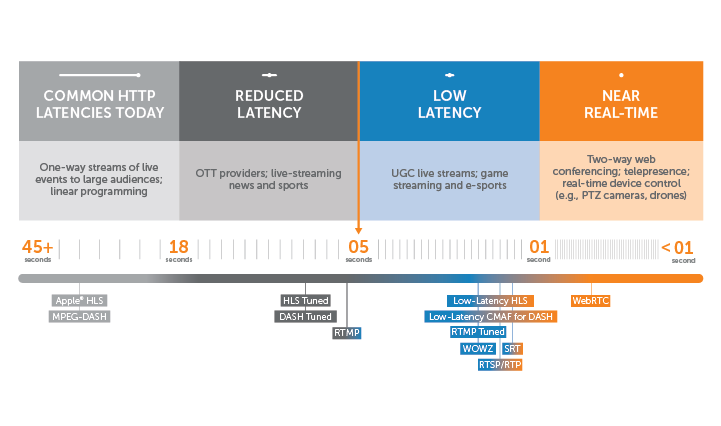
When it comes to real-time communication over the internet, WebRTC has emerged as a clear leader. There are many advantages of using WebRTC for communication. Let’s learn about them.
1. Improved Communication
WebRTC provides a much more effective communication method than traditional phone calls or video conferencing. The audio and video streaming data is transmitted in real time, eliminating the need for lag time. Additionally, the user experience is greatly enhanced as users can see and hear each other.
2. Increased Efficiency
Since WebRTC is a browser-based technology, it eliminates the need for any complex set-up or software installation. This makes it extremely easy to use and highly efficient. Additionally, WebRTC uses less bandwidth than traditional methods, increasing its efficiency.
3. Inherently Low Latency
WebRTC is designed to provide low latency audio and video streaming. This means there is little to no delay in data transmission, which significantly enhances the user experience. Additionally, this feature is highly beneficial for applications that require real-time communication, such as online gaming or live customer support.
4. Enhanced Security
WebRTC features enhanced security measures compared to traditional methods. The data transmission is encrypted, which prevents eavesdropping and ensures privacy. Additionally, WebRTC includes a built-in mechanism for identifying and authenticating users.
5. Greater Connectivity
Another advantage of using WebRTC is the fact that it provides more excellent connectivity. This technology enables users to connect regardless of their location or network. Additionally, WebRTC is compatible with many devices and browsers, further increasing its connectivity.
6. Improved Quality
WebRTC offers improved audio and video quality compared to traditional methods. The streaming data is transmitted in real time, eliminating the need for compression and producing higher-quality audio and video. Additionally, WebRTC features echo cancellation, which improves the overall audio quality.
7. Increased Collaboration
WebRTC enables users to collaborate more effectively compared to traditional methods. The real-time nature of this technology allows users to share files and information instantaneously. WebRTC includes many features that facilitate collaboration, such as screen sharing and co-browsing.
Limitations of WebRTC
Regardless of how promising WebRTC is, the fact remains that it has several limitations. Here are some of them:
1. Not Scalable
WebRTC can't be used to support a large number of users. For instance, if you have a website with a lot of traffic, WebRTC won't be able to handle it since WebRTC relies on Peer-to-Peer connections, and each connection can only support a limited number of users.
2. Call Drops
Another big issue with WebRTC is that calls can sometimes drop unexpectedly. It is usually due to poor internet connection, but it can also be caused by other factors, such as server issues.
3. Restricted Customization
While WebRTC does offer some customization options, they are quite limited compared to other solutions. This can be a problem for those who need more control over their environment.
4. Complex Configuration
Configuring WebRTC can be quite complex, especially for those unfamiliar with the technology. As a result, some people may become frustrated and even give up on using it altogether.
5. Low Broadcast Quality
The broadcast quality of WebRTC is often quite low, making it difficult for those who need high-quality audio and video. It occurs because WebRTC uses compression techniques to save bandwidth.
6. Limited Support
Finally, another big limitation of WebRTC is its limited support from browser vendors. Not all browsers are compatible, which can be a problem for those who need to use them in their work.
Now, if you are searching for WebRTC alternatives, here a comparison between Raw WebRTC and Dyte
How Can Dyte Help Eradicate WebRTC Limitations?
Dyte is a powerful, developer-friendly live video & audio SDK integration platform that helps developers build high-quality real-time applications easily and efficiently. Dyte overcomes the many limitations of WebRTC, making it the ideal choice for developing robust and feature-rich real-time applications. Some of such key highlights of Dyte include:
1. Better Quality
Dyte offers superior quality compared to other WebRTC platforms. Dyte uses advanced compression algorithms that reduce bandwidth consumption without compromising quality. Additionally, Dyte automatically adjusts bitrate and resolution based on network conditions to maintain optimal quality at all times.
2. Easy Customization
Dyte is highly customizable, allowing developers to tailor its features to their specific needs. This makes it easy to develop unique and innovative real-time applications.
3. Developer Friendly
Dyte has an intuitive and user-friendly interface that makes it easy for developers to use. Additionally, Dyte offers extensive documentation that covers all aspects of the platform, making it easy for developers to get started quickly.
4. In-Built Chat
Dyte comes with an inbuilt chat feature that allows users to communicate with each other in real time. This is valuable for collaboration applications such as online meetings and video conferencing.
5. Built-In Polls To Make Decisions Quickly
Dyte also includes built-in polls that make it easy to make decisions quickly. This is a valuable feature for applications requiring input from many users, such as online voting and customer feedback.
6. Plugins For Added Collaboration
Dyte offers a range of plugins that add extra collaboration features to applications. These include features such as file sharing and screen sharing.
7. 24x7 Developer Support
Dyte provides round-the-clock support for developers, ensuring they can get the help they need when needed. This includes access to a dedicated team of experts who are always on hand to answer any questions or resolve any issues.
Integrate Video/Voice in Minutes With Dyte
WebRTC allows you to make and receive calls, video chats, and messages without additional software. It’s perfect for businesses that want to provide their customers with an easy way to get in touch with them.
If you want to get started with WebRTC but avoid its limitations, consider Dyte.io to integrate branded, customizable, and programmable live video & voice in a matter of minutes. With Dyte’s high-quality video and voice chat along with various other features, businesses will always stay connected.
Here's an in-depth comparison between Raw WebRTC vs Dyte.






